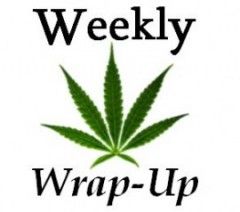By Eli McVey
Despite a slow start, Illinois’ medical marijuana program has been adding patients and increasing sales at a solid, consistent pace throughout 2016.
Licensing delays and a restrictive list of qualifying MMJ conditions had many industry insiders wondering if the state’s MMJ program was even viable. But the patient count this year through October has almost tripled, rising by more than 7,600 over the 10-month period to hit about 12,000.
Monthly sales via dispensaries have exceeded that growth rate, nearly quadrupling to hit more than $4 million in October compared with just over $1 million in January.
Growth has been steady throughout 2016, with the number of registered patients increasing at an average monthly rate of 12% and sales growth clocking in at an average of 15% a month.
Joseph Friedman, chief operating officer of the dispensary PDI Medical, suggested that Illinois MMJ businesses are becoming a bit more optimistic, especially now that post-traumatic stress disorder and terminal illness have been added as approved medical conditions.
The addition of PTSD and terminal illness also marked the first time since MMJ sales began in November of 2015 that officials have expanded the medical conditions list – an encouraging sign to business owners throughout the state.
The increase in monthly sales should alleviate some of the financial pressure faced by the state’s 47 dispensaries and 21 cultivators, each of which faces steep licensing fees and strict regulations to operate.
Concentrates and infused products – a growing category in other medical and recreational markets throughout the country – are gaining traction in Illinois as well.
The state began providing medical marijuana sales breakdowns by category in July, at which time concentrates and infused products represented 39% of the total. As of October, the category accounted for 43% of MMJ sales, with the rest tied to flower.
For comparison, concentrates and edibles currently account for 37% of Colorado’s MMJ market.
If current trends persist, concentrates and edibles may account for as much or even more of total MMJ sales as traditional flower in Illinois.
Looking ahead to 2017, Friedman believes Illinois’ MMJ program will continue to see a slow but steady increase in patients and sales, and he is hopeful that the pace will quicken as the state allows for more qualifying conditions.
Eli McVey can be reached at elim@mjbizdaily.com




